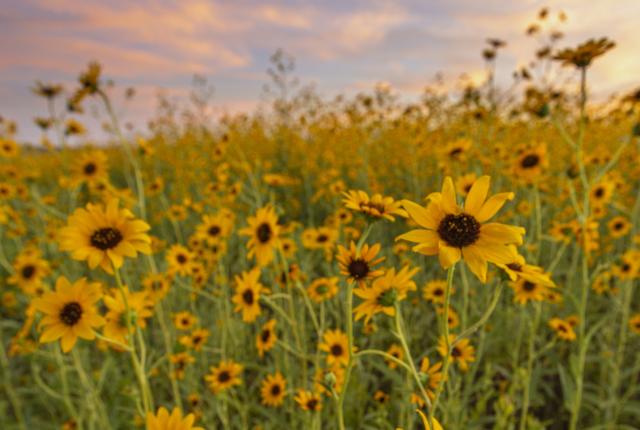LIVING DESERT ZOO and Gardens, in Carlsbad, gives an up-close look at species rarely seen in the wild, like a mountain lion and bobcat. “The prairie dog exhibit is the most popular for the kids,” says New Mexico State Parks Director Toby Velasquez, “because they’re like a living cartoon.”
Heron Lake and El Vado Lake are home to approximately 25 pairs of ospreys. They nest in what look like massive piles of sticks and are unique in their ability to dive into the water to catch live fish.
Persian ibex, wild goats with long, curved horns, were introduced to the Florida Mountains near Spring Canyon and Rockhound in the 1970s and have since thrived, sometimes being seen traversing the cliffsides.
Once an endangered species, the Pecos sunflower has rebounded in the rare wetlands at Bottomless Lakes since the removal of the invasive salt cedar, or tamarisk.
Heather MacCurdy, superintendent of Río Grande Nature Center, always knows when someone has spotted a rare species, like a western screech owl, passing through the park and reported it on eBird. On those days, visitation seems to double, with everyone trying to find it again.
Vermilion flycatchers seem particularly fond of Percha Dam, where the vibrant red birds stand out against the green of the bosque.
The Sandía hairstreak, a lime-green-and-butterscotch-winged butterfly that’s New Mexico’s state butterfly, can be found at several eastern and southern parks in March and April.


